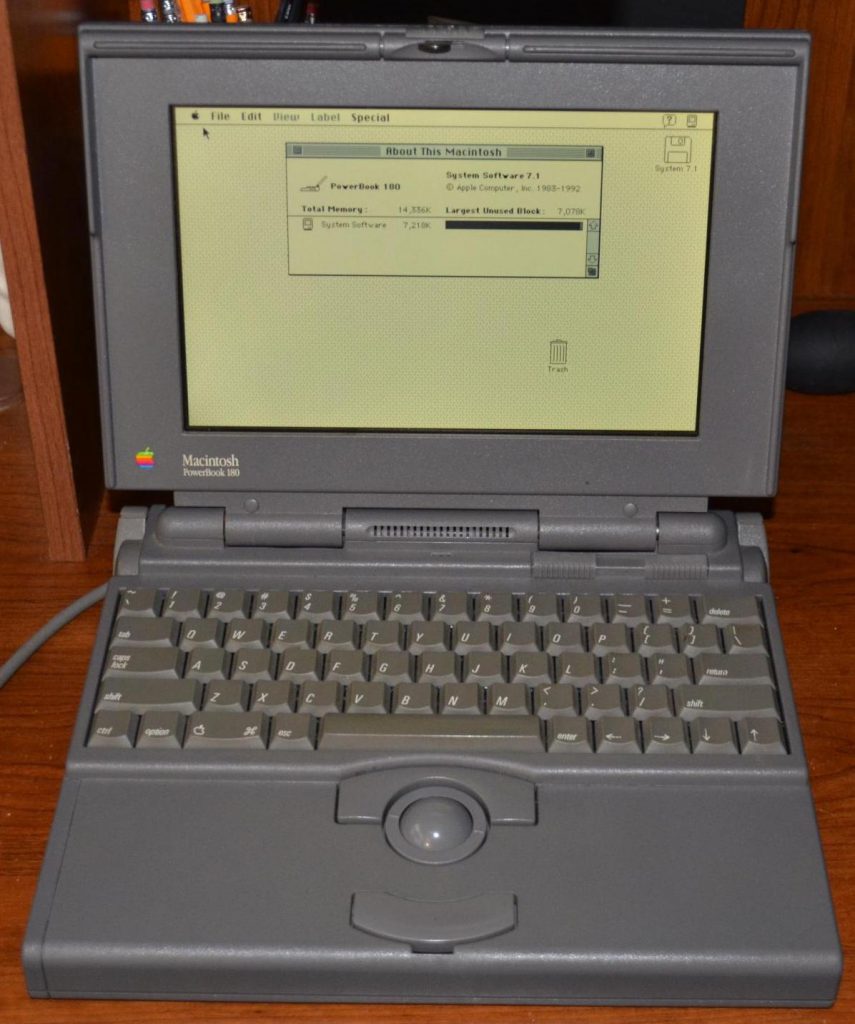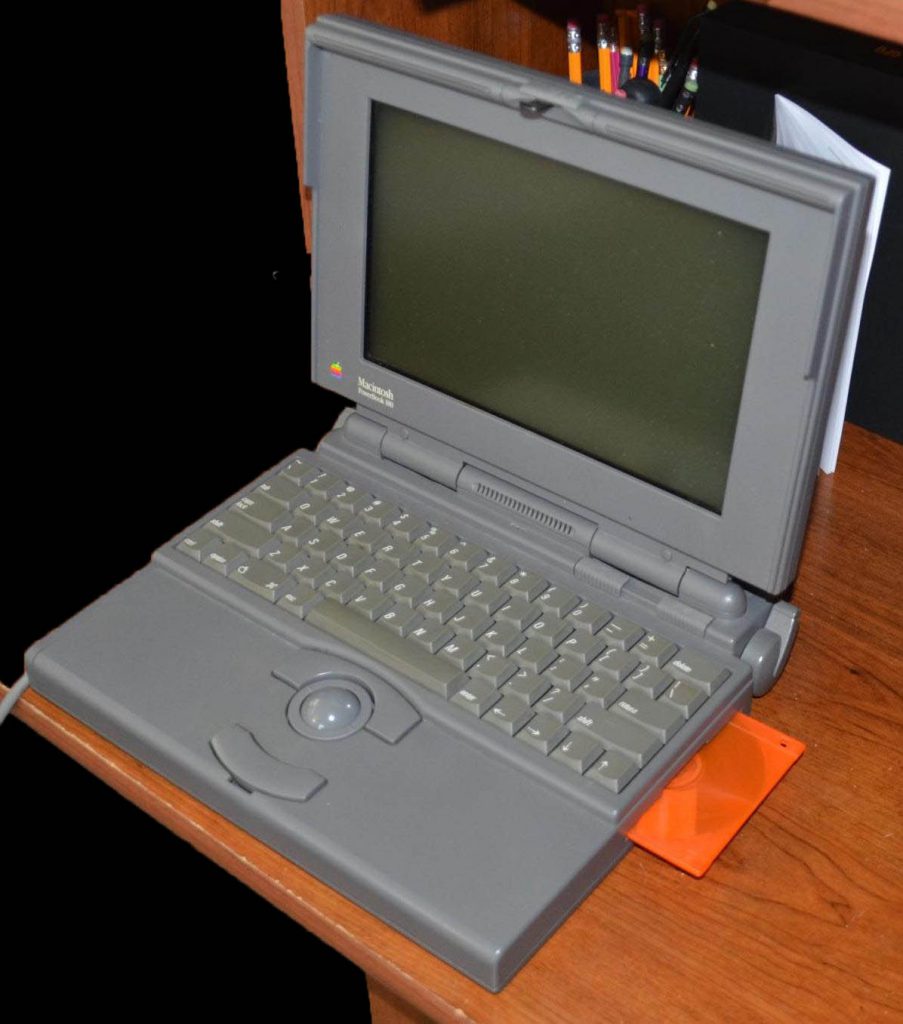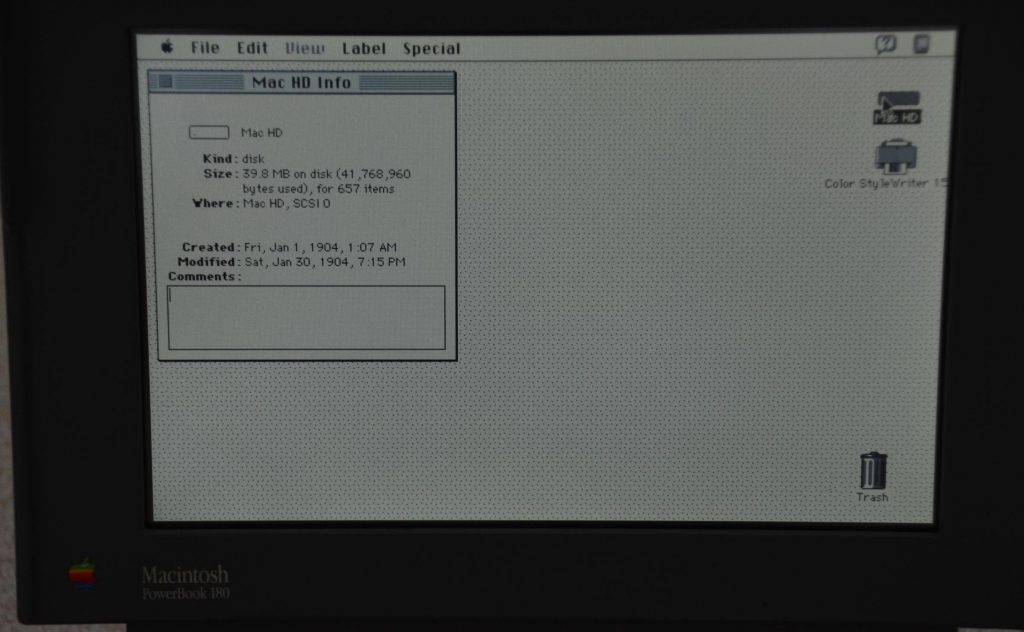I am the type of person that, despite having been into computers for over 25 years, has never owned a new Apple product. Why, then, am I writing about the PowerBook 180?
In the late 1990s, if you looked at our school’s computer lab, you would see rows and rows of Apple IIe’s, with external 5.25″ floppy drives, and amber CRT monitors. The IIe came out in 1983, so these computers were already more than 15 years old by that point. (I’m sure these are all long gone, because otherwise, whoever ended up with them would definitely be able to retire early today.) To put it more bluntly, while the rest of the world was moving on to Pentium 3’s with Windows 2000, saying Wazzap, and watching The Matrix, we were still using IIe’s.
A year later, of course, blue Apple G3 Towers with matching CRT studio displays dominated our entire school system. Two years after that, we had rows and rows of Blueberry “pod” iMac G3s, which combined the monitor with the computer. It was fairly noisy, listening to 50 of them turn on (and degauss) at the same time. I think I felt my hair move once or twice.
Apple was once revolutionary in their approach to computing. If you take an iBook G3 laptop from 2001, for example, you get Wi-Fi, you get a built-in DVD Player, you get FireWire and multiple USB Ports, and (depending whether it’s running Mac OS 9 or 10.x), you get an Operating System that has some features not seen in Windows until Windows 7.
If you take the PowerBook 180, which was released around 1992, you get an active matrix monochrome screen (in a world where passive matrix was definitely the standard), you get an integrated microphone (when sound cards weren’t even in PC-based laptops for another 3-4 years), you get a SCSI Hard Drive (whereas most laptops of the time used IDE, ESDI, or no hard drive at all), and you get a trackball (during a time when not everyone even owned a mouse yet, and new laptops like the IBM PS/2 L40SX were still being released without any mouse built-in). It’s hard not to appreciate the engineering, even if the early Macs were naturally incompatible with PCs in terms of filesystem, file types, diskette formatting, etc.
Oh, and it had an automatic floppy eject mechanism. You didn’t have to physically push a button to eject your disk; the diskette could actually pop out by itself. This was very common in the Macs of the time (in fact, some of the really early Macs had an automatic floppy INJECT mechanism as well as an eject one. Think of the more modern slot-loading CD drives, but with floppy disks.)
Of course, the PB 180 wasn’t the first PowerBook, nor was it the first Mac with a 68k processor, but I’m focusing on it because it’s one of the better models to represent the product lineup of the time.
The PowerBook 180 retailed for roughly $3,870 in 1992, or about $6,868 in 2018. This seems like an awful lot of money to spend on a laptop these days, but if you think about how much people spend on smartphones that probably won’t last 25 years like the PowerBook, it was probably actually cheaper in the long-term to get the Mac. Note that I could still use the PowerBook in today’s world for certain things. For example, I could use it to take notes, and then save the document to a floppy (and read it on a modern PC using a tool like HFVExplorer). A workflow like that might take an hour or two to set up, but only a few minutes to use after it’s set up.
Here are some pictures of my 180:




Recent Comments